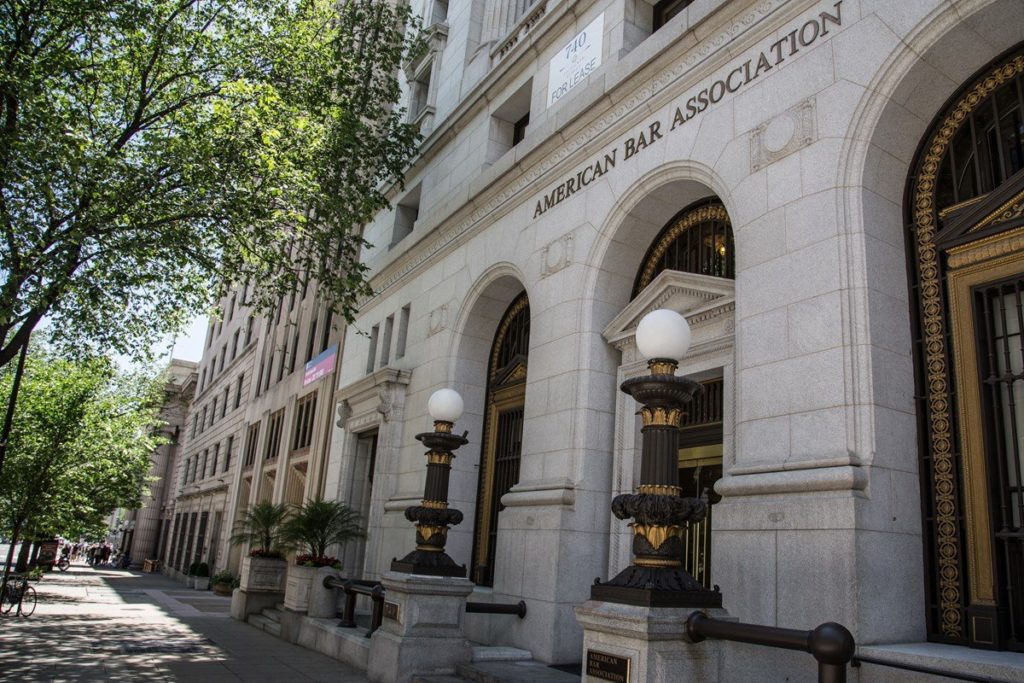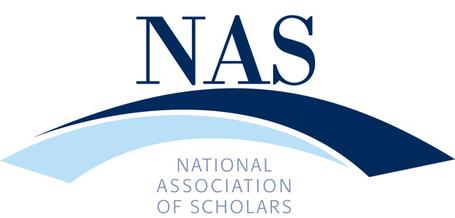The ABA’s Long March Continues
State supreme courts seem content to allow a leftist cartel to impose ideological conformity on America’s law schools.
This essay first appeared in Law & Liberty on August 24, 2021 (here). Thanks to Power Line, Instapundit (here), SE Texas Record (here), Real Clear Policy, and TaxProf Blog (here)! And thanks to Mary Reichard, host of the Legal Docket podcast, by the World News Group (here)!

Nothing better exemplifies the Gramscian “long march through the institutions” than the role of the American Bar Association in transforming America’s legal establishment. The ABA, with over 400,000 members, bills itself as “the world’s leading legal association,” and indeed it is the largest voluntary professional organization in the world. Founded in 1878 to represent the interests of elite corporate lawyers, the ABA now also includes judges, law professors, court administrators, paralegals, government lawyers, non-practicing lawyers, and even law students. Once a bastion of conservatism—having opposed many New Deal initiatives supported by President Franklin D. Roosevelt—the ABA is now a liberal organization whose policy positions are often indistinguishable from those of the ACLU and other activist groups.
Critics charge that the ABA is essentially a trade association for America’s 1.3 million lawyers—a cartel. Befitting its role as advocate for this powerful interest group, the ABA claims to have “more than 3,500 entities supported by 900 staff and thousands of volunteers.” As a special interest group, this makes the ABA a behemoth. The ABA’s influence is projected in a variety of ways: lobbying, issue advocacy (through ABA task forces and committees, testimony and statements by ABA officials, and affiliated non-profit initiatives), controversial (and, critics contend, biased) evaluation and rating of judicial nominees, proposed ethical rules for attorneys, filing amicus briefs, policy positions adopted by the quasi-legislative House of Delegates, and honoring partisan figures with awards, as the ABA’s Commission on Women in the Profession did in 1992 when it recognized Anita Hill as a “Woman of Achievement” following her discredited charges against Justice Clarence Thomas at his Senate confirmation hearing.

The ABA is, of course, a voluntary organization and accordingly is free to take openly-political positions with its annual budget of nearly $100 million. Without compulsory dues, the ABA is not constrained by the First Amendment pursuant to Janus v. AFSCME (2018), unlike unified state bar associations, whose political advocacy is being challenged in court. Large law firms, which account for a large portion of the ABA’s dues revenue, share many of the left-leaning attitudes promoted by the ABA, as reflected by the mega-firms’ increasingly “woke” pro bono activities. For the most part, the ABA’s political advocacy takes place in the open, where it can be monitored, challenged, and resisted. Alternative groups, such as the center-right Federalist Society, have proven very effective in combating liberal activism through intellectual debate.

Of far greater concern is the ABA’s influence over America’s law schools, by virtue of its unwarranted role—granted by state supreme courts—as accreditor of institutions whose graduates are permitted to sit for bar examinations necessary to practice law. No one would attend a law school if its graduates were not eligible to take the bar exam. Thus, the ABA (through its Section of Legal Education and Admissions to the Bar) is the de facto gatekeeper of the legal academy, determining which schools to accredit, and on what terms. Moreover, the U.S. Department of Education has given the ABA the power to determine which law schools are eligible for federal student loans, equally indispensable to attract students. In both of these respects, the cartel is effectively given monopoly control over legal education—a prescription for abuse.
The specific means used by the ABA to control law schools are its Standards and Rules of Procedure for Approval of Law Schools, the requirements of which go far beyond establishing minimum quality standards (for facilities, faculty/student ratios, and the like) and now dictate particular policies. For example, Standard 206 requires “diversity and inclusion” in the student body “with respect to gender, race, and ethnicity.” The ABA has interpreted this to mean that a school must relax meritocratic admissions policies to achieve an acceptable demographic mix—racial quotas, in other words.
In the early 2000s, the ABA bullied George Mason University’s law school, now known as Antonin Scalia Law School, into lowering its admission standards for minority students (especially African-Americans) in order to increase the percentage of minorities enrolled. The ABA threatened to revoke the law school’s accreditation if it did not submit. The ABA’s stated justification for this type of overreach (per its Interpretation 206-2) is that “the enrollment of a diverse student body promotes cross-cultural understanding, helps break down racial, ethnic, and gender stereotypes, and enables students to better understand persons of different backgrounds.” Thus, in the name of ostensibly improving the quality of law schools, the ABA requires them to lower their admission standards and enroll less-qualified (or even unqualified) students. Voila!
The ABA’s unchecked role in regulating legal education has gone largely unnoticed, at least in contrast to, say, highly-publicized judicial evaluations, but the heavy hand of the ABA is very consequential, even behind the scenes. Northwestern University law professor John McGinnis has written about the ABA’s accreditation standards (as well as the equally-clandestine influence of the American Association of Law Schools), in the Wall Street Journal and elsewhere. A few years ago, I lifted the curtain on the ABA’s role in law school accreditation in a pair of articles here at Law & Liberty (here) and (here).
I noted in 2018 that “One reason that law schools are becoming monolithic social justice academies and ideological echo chambers is that the ABA—in its capacity as regulator—is pushing them to do so.” I added that “The ABA has too much control over accreditation standards that have little or nothing to do with maintaining the quality of legal education, and everything to do with promoting a leftist ideological agenda.” In particular, the ABA meddles in law school admissions, governance, and even curriculum. In a subsequent piece, I observed that the ABA
has gone far beyond its original mission of establishing minimum standards for legal education to protect the public…. The governance model that has led to this dysfunction must be replaced. The Department of Education should re-evaluate the ABA’s monopoly status as the accrediting organization for law schools, or at least insist that the ABA confine itself to legitimate quality control objectives—not social engineering. State supreme courts should likewise re-introduce competition into the process of determining eligibility to take the bar exam, or establish their own standards, or both. Legal education is broken; law schools need a new governance model.
My concerns went unheeded. Since 2018, things have only gotten worse. The ABA has recently proposed changes to its accreditation standards that make the organization’s social engineering even more intrusive. Outside of a few law professor blogs, however, the issue barely registered in the public commentariat. It warrants far greater attention. The ABA’s proposed changes dramatically extend the “diversity and inclusion” requirement of Standard 206 for both students and faculty. Proposed Standard 206(a) states that:
A law school shall provide:
(1) Full opportunities for the study of law and entry into the profession by members of underrepresented groups, particularly those related to race, color, ethnicity, religion, national origin, gender, gender identity or expression, sexual orientation, age, disability, and military status; and
(2) An environment that is inclusive and equitable with respect to race, color, ethnicity, religion, national origin, gender, gender identity or expression, sexual orientation, age, disability, and military status. (Emphasis added.)
Proposed Standard 206(b) states that:
A law school shall take effective actions that, in their totality, demonstrate progress in
(1) Diversifying the student body, faculty, and staff; and
(2) Creating an inclusive and equitable environment for students, faculty, and staff. (Emphasis added.)
Faculty critics have charged that the ABA’s proposed changes are “ill-supported by evidence.” Moreover, critics note that many of the revised terms are imprecise and susceptible of subjective application, and that the ABA’s prolix “interpretations,” which impose on schools quota-oriented data collection obligations, vague affirmative action duties (applicable to both students and faculty), and the requirement of “diversity, equity, and inclusion training,” demand ideological conformity and possibly violate the faculty’s academic freedom.
The ABA’s interpretation of Proposed Standard 206 repeats several times the Orwellian mantra “The determination of a law school’s satisfaction of such obligations is based on the totality of the law school’s actions and results achieved.” Determining compliance (or non-compliance), in other words, is within the sole and unfettered discretion of the ABA–an invitation for capricious decision-making. Faculty critics have condemned the ABA’s proposed changes as “bizarre,” “dubious,” “an abuse of power,” and calculated to mandate unlawful conduct by law schools, provoking litigation.
This is just the tip of the iceberg. The ABA also seeks to require (in Proposed Standard 303(c)) law school curricula to include “training and education to law students on bias, cross-cultural competency, and racism: (1) at the start of the program of legal education, and (2) at least once again before graduation.” Once again, the ABA’s interpretation does not define “cross-cultural competency,” preferring to leave the determination of compliance entirely up to the overseers at the ABA: “[L]aw schools must demonstrate that all law students are required to participate in a substantial activity designed to reinforce the skill of cultural competency and their obligation as future lawyers to work to eliminate racism in the legal profession.” (Emphasis added.) Faculty critics charge that this constitutes an “unwarranted intrusion” into course content and an “overreach.”
Indeed, it is—and has been for some time. The ABA’s proposed changes do not stop there, but surely the reader gets the drift. Like other leftist initiatives currently underway, the ABA’s proposed revisions are simultaneously grandiose, extreme, and hubristic. Will the ABA’s long march continue, or will—at long last—the beleaguered defenders manning the ramparts of the legal academy repel further intrusion? Stay tuned.
































